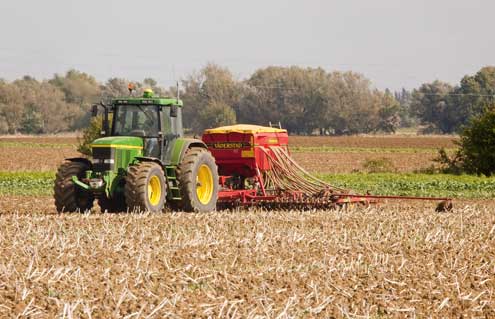Disease control plays catch up

The latest flowering period that anyone can remember could have an effect on variety performance this year, confirms NIAB TAG’s oilseeds expert, Simon Kightley.
“I’ll be amazed if anything runs to script,” he says. “Only time will tell if the later flowering types had the advantage of a more favourable set of conditions, as some people suspect.”
Either way, it underlines the importance of looking at more than one year’s data when considering variety suitability, he comments. “This is a very different growing season to the one we had last year, which in turn was very different to 2011.”
For growers in the east/west region who want a hybrid variety, the out-and-out winner for consistency is PR46W21, he notes. “It still tops the HGCA Recommended List and has done very well for the last four years. At the moment, it’s showing a small yield advantage over the best conventional varieties.”
PR46W21 is relatively tall, adds Mr Kightley, but it has very good standing ability, both from its lodging and its stem stiffness scores. “It’s an early flowering variety, with medium maturity, and just about sets the standard for high oil content.”
However, it does lack good disease resistance, he warns. “Growers have to be attentive with their spray programmes. It hasn’t done particularly well in the north, but it is the marker for the east/west region.”
A contrasting hybrid to consider is newly recommended Marathon, which is a shorter type, he reports. “It’s another hybrid with very good standing ability and even earlier flowering.
Its disease resistance, however, doesn’t impress, with a 3 for stem canker. “This obviously can be sorted, or Marathon wouldn’t be in second place on the List.”
Mr Kightley’s third hybrid pick is another newcomer, Avatar, for its earliness. “It’s slightly earlier to mature than the other two, but doesn’t bring better disease scores.”
For that reason, he has DK Expower in reserve place. “If you’re looking for a hybrid with better stem canker resistance, then Expower is a good bet with an 8. It does have a 3% yield penalty compared with the other three though.”
There’s a slight yield gap to the best conventional varieties, he points out, but there are some very good choices among them.
He opts for Rivalda, DK Cabernet and Sesame, all of which have a gross output of 103%. “DK Cabernet is my frontrunner because it has proven itself. It has excellent standing ability, but its relatively late flowering and maturity has caused some concern in the past.”
Late flowering
Although it’s not outstanding for disease resistance, it doesn’t become too tall, he comments. “If you’re concerned about the late flowering risk, balance it by growing some others as well.”
The new variety Rivalda is earlier flowering, but with the same late maturity, he points out. “So it could be a useful contrast with DK Cabernet. Just be aware of its lower lodging and stem stiffness scores – keep seed rates down and use growth regulators.”
Sesame, which hasn’t quite lived up to its early promise, is still among the best conventionals, he believes. “It has excellent standing ability, medium flowering and late maturity.
“Again, it’s nothing special for disease.” So, Quartz takes the reserve place in the conventionals category, where disease is a concern. “It has a 9 rating for stem canker.”
Some of the older conventional varieties are still selling very well, points out Russell Frost of Nidera. “We’re seeing interest in the likes of Vision, which growers have confidence in.”
In the north region, the RL is headed by the conventional variety, Anastasia, but the top three places are very tight, with Troy and Compass close behind, points out Mr Kightley.
“There’s something for everyone. A conventional, a semi-dwarf and a hybrid – all of which have good standing ability, early to medium flowering and medium to late maturity.”
However, none of the top three have superior light leaf spot resistance, he warns. “If that is a concern, look at Boheme with a 7 or Cuillin with a 9.”
| Candidates |
|---|
| A very impressive conventional variety from KWS tops the list of candidates in the east/west region, enthuses Mr Kightley. “Charger is worth getting excited about,” he says. “It has a gross output of 110%, it’s short and stiff, with early flowering and maturity.” He sees it having a place alongside DK Cabernet. “Growers will want to grow it. It’s a low biomass, conventional type and the only downside is its ordinary disease resistance.” Another variety which has caught his eye is the DSV hybrid Incentive. With a yield of 108%, it has an 8 for lodging resistance and a 7 for stem stiffness, with 6s for earliness of flowering and maturity. “At this stage, Incentive is doing as well or better in the North. So it would seem to be one of the few UK varieties.” He is also keeping an eye on Bayer’s hybrid, Harper, one of the tallest candidates. “It’s early to flower and mature and has good phoma resistance.” |

